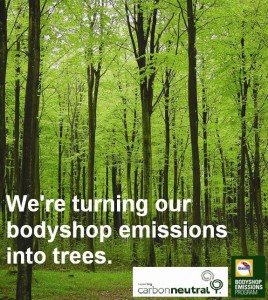What to do after an accident
What to Do After a Car Accident: A Guide for South Australian Drivers
Navigating the aftermath of a car accident can be overwhelming, especially amidst the stress and confusion that often ensue. For drivers in South Australia, understanding the steps to take following an accident is crucial—not only to ensure the safety and well-being of all involved but also to navigate the legal and insurance processes that follow. This guide provides a comprehensive overview of what to do after a car accident, emphasizing the importance of informed decisions, particularly when selecting a crash repairer.
Immediate Steps Following an Accident
Ensure Safety First
The immediate aftermath of an accident is critical. Your first priority should be to check for injuries among all parties involved. If anyone is injured, move to a safe location if possible, but do not leave the scene. Disturbing the accident scene should be avoided unless necessary for safety.
Assess the Situation
Depending on the severity of the accident, calling emergency services on 000 for medical support, fire services, or police assistance might be necessary. In South Australia, certain accidents must be reported—such as those involving injuries, significant property damage, or uncooperative parties.
Legal and Safety Obligations
Reporting to the Police
In South Australia, the law requires reporting accidents under specific circumstances, including injuries or significant damage. The report should be made to the nearest police station, and failure to report can have legal consequences.
Exchange Information
Exchanging contact and insurance information with the other driver(s) is essential. This includes names, addresses, phone numbers, insurance details, and vehicle registration numbers. It’s important to remain calm and cooperative during this process.
Documenting the Accident
Collect Evidence
Taking photos of the scene, the damage to all vehicles, and any relevant road signs or conditions can be invaluable. Additionally, gathering the contact details of any witnesses can support your account of the event.
Take Notes
As soon as you’re able, write down your recollection of the accident, including the time, location, and how it occurred. These notes can be crucial for insurance claims and legal matters.
Dealing with Insurance
Immediate Contact
Notify your insurer about the accident as soon as possible. Prompt communication is essential to initiate the claims process and ensure coverage.
Understanding Your Policy
Familiarize yourself with your insurance policy, especially regarding the “choice of repairer” if your policy includes this option. This knowledge is vital before making any decisions about vehicle repairs.
Choosing a Trusted Crash Repairer
Importance of Choice
Selecting a crash repairer you trust is crucial before contacting your insurer, particularly if you have a choice of repairer in your policy. This decision can significantly impact the quality of your vehicle’s repairs.
Researching Repairers
Do your homework by researching reputable crash repairers in South Australia. Consider factors such as certifications, customer reviews, and personal recommendations. A trusted repairer can ensure your vehicle is restored to its pre-accident condition.
Avoiding Sub-Par Repairers
Be wary of automatically accepting your insurer’s suggested repairer without conducting your research. This can lead to issues with the quality of repairs. Remember, you have the right to choose a repairer who meets your standards.
Post-Accident Care and Support
Follow-Up Medical Care
Even if you feel fine, it’s wise to seek medical attention after an accident. Some injuries may not be immediately apparent but can cause problems later.
Legal Advice
If there are disputes about fault or complications with insurance claims, consulting with a legal professional may be beneficial. Legal advice can help navigate these complexities.
Support Services
Accidents can be traumatic. Accessing support services for mental health and well-being is as important as addressing physical injuries. Various resources are available for South Australians in need.
Being involved in a car accident is a challenging experience. However, knowing the steps to take afterward can alleviate some of the stress and confusion. By following this guide, South Australian drivers can ensure their safety, fulfill their legal obligations, and make informed decisions throughout the insurance and repair processes. Keep a checklist of these steps in your vehicle, ensuring you’re prepared for the unexpected.
Remember, the decisions you make after an accident can have long-term implications on your safety, your vehicle’s condition, and your legal and financial well-being. Stay informed, stay safe, and choose wisely.
A step ahead in South Australia
Dynamic Paint N Panel are the first carbon neutral crash repairer in South Australia.
Glasurit recently published an article on DPP. Click on the bodyshop emissions logo below to read the article.
Woodside:
Woodside, Woodside North, Lobethal, Birdwood, Mount Torrens, Lenswood, Charleston, Cherryville, Oakbank, Balhannah, Harrogate, Brukunga, Bridgewater, Hahndorf, Mount Barker, Nairne, Littlehampton, Gumeracha, Cudlee Creek, Uraidla, Adelaide Hills, Mount Pleasant, Mannum, Kanmantoo, Wistow, Stirling, Aldgate, Crafers.
Contact us at Woodside today to discuss your crash repair needs.
Stepney:
Stepney, magill, norwood, St. Morris, College Park, Maylands, Kent town, Adelaide, Trinity Gardens, Kensington, Kensington Gardens, Kensington Park, Rostrevor, North Adelaide, Hackney, Evandale, Gilberton, Walkerville, Rose Park, Toorak Gardens, Leabrook, Rosslyn Park, Burnside, Wattle Park, Beulah Park, Payneham, Payneham South, Newton, Marden, Royston Park, Walkerville, Eastwood, Dulwich, Glenside, Tusmore, Heathpool, Vale Park, Parkside, Eastwood.
Contact us at Stepney today to discuss your crash repair needs.
Dynamic Paint N Panel published in international magazine
Australasian Paint N Panel magazine have recently run an article about the DPP success storey in their online news letter.
Click on the Australasian Paint & Panel Logo to read the article.
Dynamic Paint N Panel has been a family owned and run since 1972. From their original workshop between Payneham Road and Magill Road in Stepney the Condo family has expanded to the Adelaide Hills and down to the Fleurieu Peninsula with an extra workshop at Woodside and a satellite office in Strathalbyn. Specialising in paintless dent removal, hail damage, respraying, and even full write off repair Cos and the team have been servicing the Eastern Suburbs of Adelaide for more than 45 years. If you’re in need of minor or major repair to your car and live or work in anywhere in the Eastern Suburbs, or Adelaide Hills give us a call on (08) 8362 7395 and we’ll be happy to help in any way we can.
Woodside:
Woodside, Woodside North, Lobethal, Birdwood, Mount Torrens, Lenswood, Charleston, Cherryville, Oakbank, Balhannah, Harrogate, Brukunga, Bridgewater, Hahndorf, Mount Barker, Nairne, Littlehampton, Gumeracha, Cudlee Creek, Uraidla, Adelaide Hills, Mount Pleasant, Mannum, Kanmantoo, Wistow, Stirling, Aldgate, Crafers.
Contact us at Woodside today to discuss your crash repair needs.
Stepney:
Stepney, magill, norwood, St. Morris, College Park, Maylands, Kent town, Adelaide, Trinity Gardens, Kensington, Kensington Gardens, Kensington Park, Rostrevor, North Adelaide, Hackney, Evandale, Gilberton, Walkerville, Rose Park, Toorak Gardens, Leabrook, Rosslyn Park, Burnside, Wattle Park, Beulah Park, Payneham, Payneham South, Newton, Marden, Royston Park, Walkerville, Eastwood, Dulwich, Glenside, Tusmore, Heathpool, Vale Park, Parkside, Eastwood.
Contact us at Stepney today to discuss your crash repair needs.



